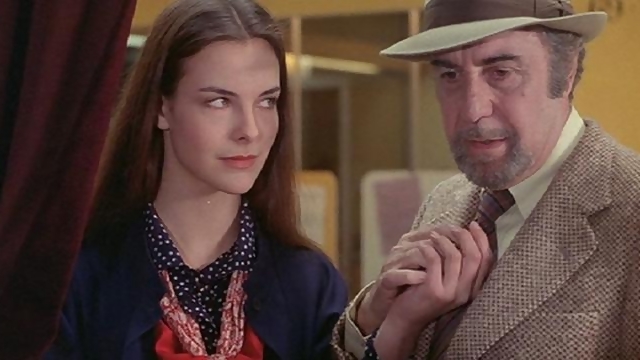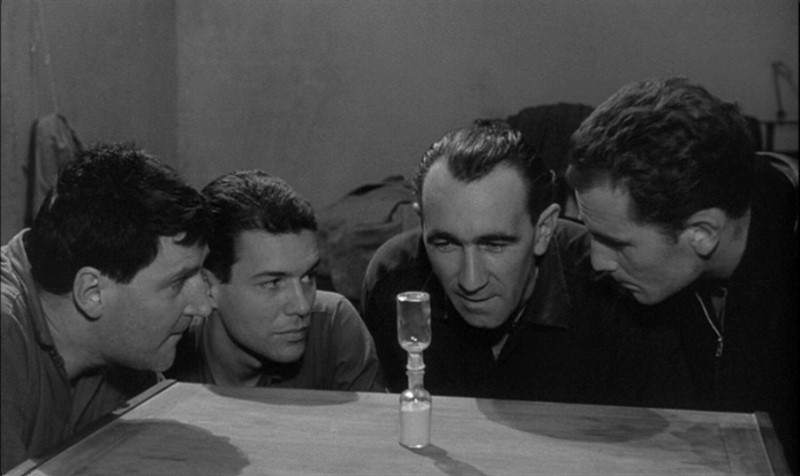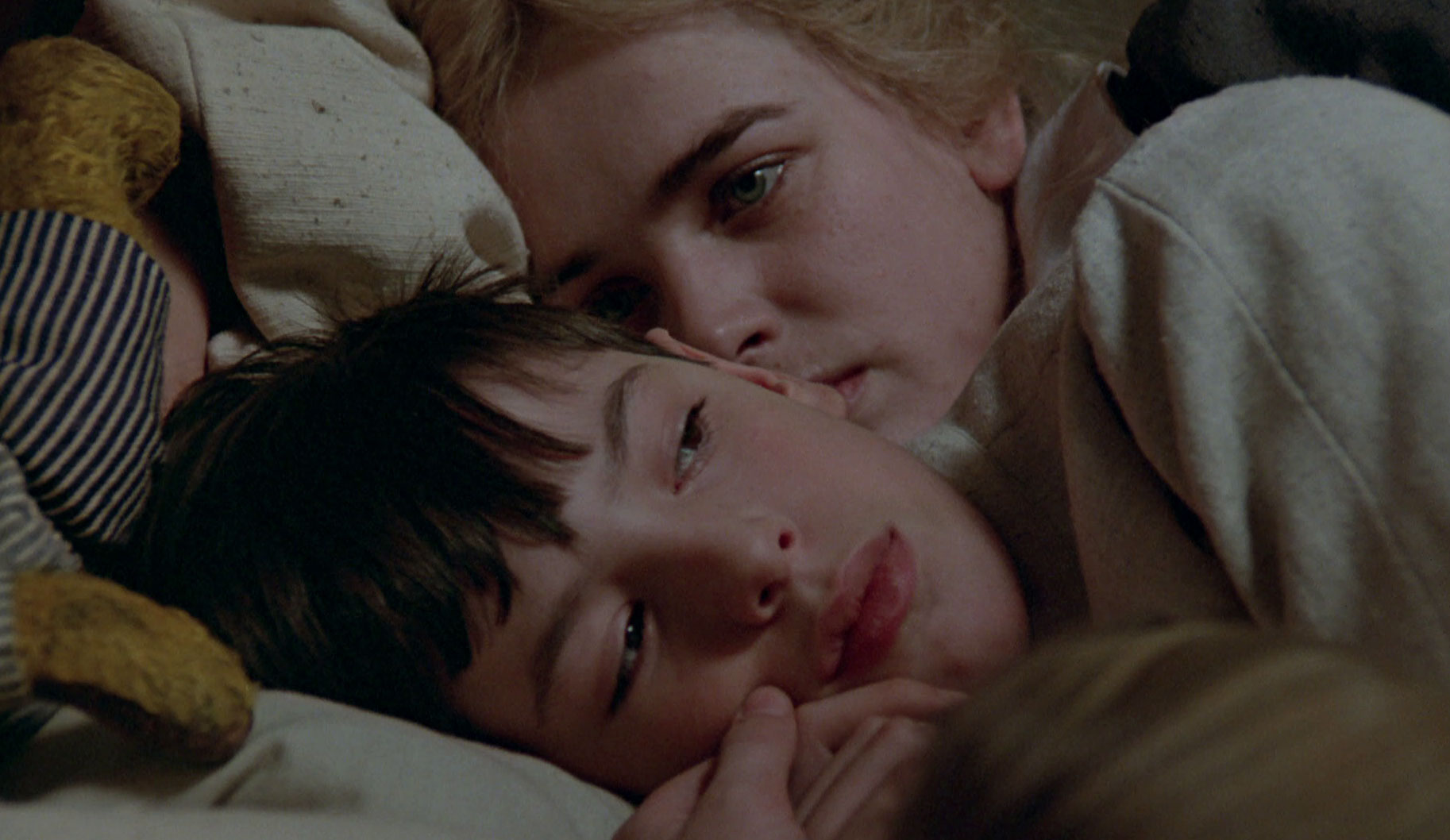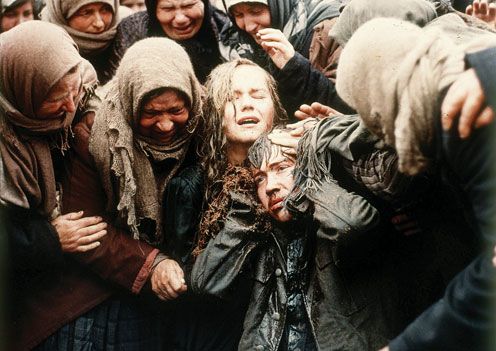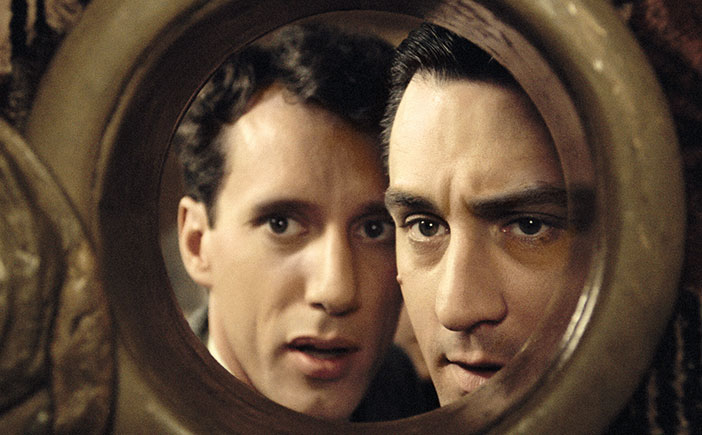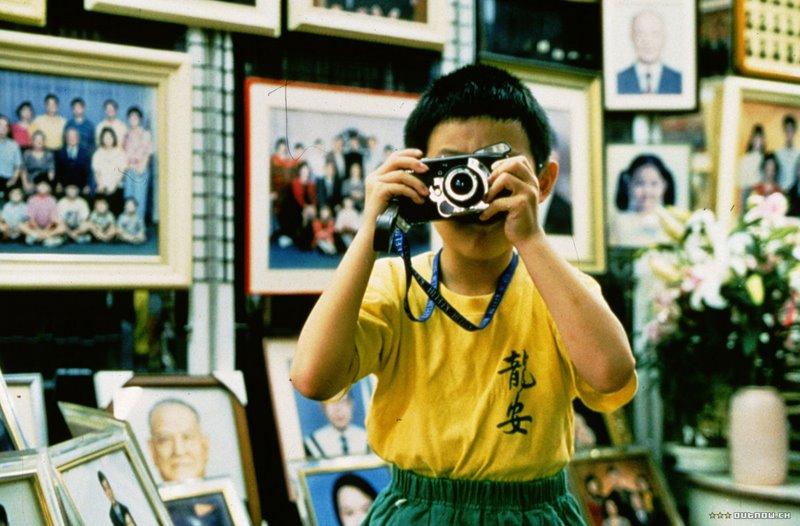7. F for Fake (1973) by Orson Welles (1915–1985)
Known for his distinctive voice, his 1937 Broadway adaptation of Julius Caesar, his 1938 narration of the radio adaptation of “The War of the Worlds”, his magic performances at troop variety shows and as one of the greatest filmmakers of all time, Orson Welles’ career was a bittersweet one.
In 1941, at the age of 26, he directed, co-wrote, produced and starred in Citizen Kane, one of the greatest debuts in cinema history and a film which is often cited as the greatest film of all time. After directing Kane, he was rarely allowed to make any subsequent film in total freedom His films were often edited without his permission or approval and many still remain unreleased.
F for Fake was initially a documentary about Elmyr de Hory, one of history’s most famous art forgers and consists of interviews with Clifford Irving ,who wrote the book, “Fake! The Story of Elmyr de Hory the Greatest Art Forger of Our Time” . The film also examines the love-hate relationship between the two men. Welles then appears as himself in the film interacting with the main players, in the cinematic equivalent of Gonzo journalism.
Noted for its outstanding editing techniques, the film then explores Welles early radio career, Pablo Picasso’s obsessions and Howard Hughes’ controversial biography. The film has been described as a kind of film .
6. That Obscure Object of Desire (1977) by Luis Buñuel (1900–1983)
A filmmaker famous for his surrealist sequences, an indication of his vivid imagination, Luis Buñuel was born in Spain and worked in Mexico and France.
His debut Un Chien Andalou (1929), which he wrote with Salvador Dali, was called “the most famous short film ever made” by critic Roger Ebert.During a nearly a 50 year career, Buñuel worked in a variety of genres, directing and writing films which would often survive as classics of world cinema and which would win a number of accolades including a Golden Lion, a Career Golden Lion from The Venice Film Festival and a Palme d’Or from the Cannes Film Festival.
That Obscure Object of Desire, which earned Buñuel his second Oscar nomination overall, specifically for his screenplay, tells the story of a middle aged, prosperous Frenchman, who becomes infatuated with a young Spanish dancer.
The film stars Buñuel regular Fernando Ray and was also nominated for Best Foreign Language Film at the 1978 Academy Awards.
5. Le Trou (1960) by Jacques Becker (1906–1960)
Born in Paris in 1906, Becker began his career, assisting Jean Renoir when the veteran director made some of French cinema’s most notable films including La Grande Illusion (1937). When the Germans occupied France during World War II, he became a Nazi prisoner for a year. It was during the time,after he was released, in the early 1940’s that he started his own directing career.
Lauded by such people as Jean-Pierre Melville and François Truffaut, Becker’s work was rarely appreciated during his lifetime. His reputation has continued to grow since his death, with the romantic period piece Casque d’or (1952), the gangster film Touchez pas au grisbi (1954), and the prison drama Le Trou (1960) all considered genre classics .
Le Trou is based on a true events concerning four felons and their complicated and intricate plans to escape from prison. The four men are then forced to seek the involvement of another man, a man none of them actually know.
Becker hired three of the actual felons as consultants and would use non-actors to ensure a quality of realism. One of these non-actors, Jean Keraudy was also a participant in the escape plan.
Le Trou was nominated for the BAFTA Award for Best Film in 1962 and lost the Palme d’Or to La Dolce Vita in 1960. Becker died two weeks after shooting on Le Trou was completed.
4. Fanny and Alexander (1982) by Ingmar Bergman (1918–2007)
One of the authentic auteurs of cinema history, Ingmar Bergman directed nearly 70 films and 170 plays. He would often work with cinematographer Sven Nykvist and a select group of actors in films mostly set in his native Sweden.
After having a career filled with acclaim and awards including 12 Oscar nominations , 3 wins and a career Golden Lion from the Venice Film Festival, Bergman retired from film making in December 2003 and died at his home on Fårö Island, on 30 July 2007, at the age of 89. His films often v dealit with morality, death, and crisis of faith.
Intended to be his last film, Fanny och Alexander tells the story of the titular characters, two children growing up in early 20th century Uppsala, Sweden , The film details how they face the hardships life brings them.
Shot in chronological order and originally conceived and shown as a four part series for Swedish television with a running time of 312 minutes, the production was Bergman’s first film in his native Sweden after spending four years as a tax exile in Germany was the costliest and most expansive native Swedish film production made up to that time, with a budget of $6 million.
The film won the Academy Award for best foreign language film along with three other Academy Awards and is ranked alongside Bergman’s best work.
3. Come and See (1985) by Elem Klimov (1933–2003)
Making films in the former Soviet Union wasn’t an easy task. All films produced by the different republics under the Soviet Union were regulated by the Central Government in Moscow and, since the film industry was fully nationalized, filmmakers had to follow the rules, laws and philosophies of the government. This censorship greatly angered and hindered many artists .
Klimov went to the All-Union State Institute of Cinematography in Moscow where he met future wife and filmmaker Larisa Shepitko. He just made five films in his lifetime and was comfortable working with a variety of genres. All five of his films were censored and banned for at times with his third feature taking nine years to make before spending a further ten years on the shelf, finally being shown in 1981.
Come and See recounts experiences from his childhood. It is about a 15-year-old boy who joins the resistance in Nazi-occupied Belarus in 1943 and experiences the horrors of war.
Klimov’s film does not shy away from the brutality of war. Roger Ebert described it as “one of the most devastating films ever about anything, in it, the survivors must envy the dead…”. The film was shot in chronological order over nine months and used live ammunition.
Klimov did not work after Come and See and in 2000 declared, “I’ve lost interest in making films. Everything that was possible I felt I had already done.
2. Once Upon a Time in America (1984) by Sergio Leone (1929–1989)
Sergio Leone, like several of the other names on this list, was a writer, producer and director. Leone is known for his work in the 1960s sub-genre “Spaghetti Western” . The term came about since many of the films were produced by Italians.
Known for his quartet of 60’s westerns featuring the music of long time collaborator Ennio Morricone and his extreme close-ups of the actor’s eyes, Leone’s career is filled with unrealized projects including adaptations of The Godfather, Gone with the Wind and his most ambitious endeavor, adapting the non-fiction book The 900 Days: The Siege of Leningrad.
After acquiring financing, convincing Morricone to compose the score and enlisting cinematographer Tonino Delli Colli, he died of a heart attack two days before he was to leave for Los Angeles to sign the contracts for the last mentioned project.
Leone’s last completed film, Once Upon a Time in America tells the tale of five Jewish youths who grow up on the Lower East Side of Manhattan and their rise from small time criminals to becoming New York’s most notorious gangsters.
Intended to be a tribute to the early gangster films of his childhood, the film mainly employs flashbacks. Leone was forced to severely edit the film, trimming it from the planned six hours to just under four hours. For the US release however, it was further trimmed to 144 minute. This deterred Leone from making another film. This was also the first and last time Leone received any European award recognition.
1. Yi Yi (2000) by Edward Yang (1947–2007)
One of the leading film-makers of the Taiwanese New Wave, Edward Yang grew up in Taipei, Taiwan. After studying Electronic Engineering in Taiwan, he enrolled in the graduate program at the Florida State University. He briefly enrolled at USC Film School and after graduating he worked in Seattle before going back to Taiwan where he wrote, produced and directed in a series of television shows.
His films are often set in urban Taiwan and mainly deal with how money and greed adversely affects people’s decisions.
Shot over 5 and a half months in Taipei, Yi Yi centers on the personal struggles of three members of a middle-class Taiwanese family Yi Yi was well received, winning a number of awards including best director for Yang at the Cannes Film Festival in 2000 .The film is often ranked among the greatest films of the 21st century.
Honourable Mentions:
1. Robert Altman’s A Prairie Home Companion (2006)
A wonderful film which takes a look at the fictional last broadcast of the famous radio show.
Starring an excellent cast, filled with Oscar winning and nominated actors, Altman directed most of the film from a wheelchair. Paul Thomas Anderson was hired as standby director in case Altman was unable to finish shooting. Altman died 6 months after the films premier, aged 81.
2. Jean Renoir’s The Vanishing Corporal (1962)
Named as “the greatest film director in the world” by both Charlie Chaplin and Orson Welles, Renoir was a French film director, responsible for many of French and World cinemas finest films.
His last film is a comedy about a French corporal, and his efforts to escape a German POW camp. The Vanishing Corporal was nominated for the Best Film award at the 1963 BAFTA Awards.
3. Luchino Visconti’s L’innocente (1976)
An Italian director, known initially for developing the movement of neo-realism and later for his beautiful period pieces.
A film unlike many of his previous films, L’innocente is about an aristocrat, who openly roams about with his mistress in front of his wife. But, when she becomes unfaithful, He falls in love with her again.
Author Bio: Arnab Sen is a student studying economics in Calcutta and has been seriously watching films for some time now.

